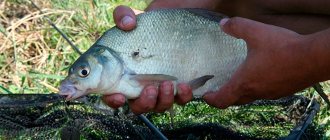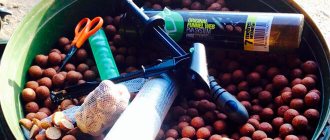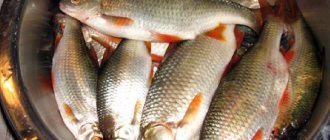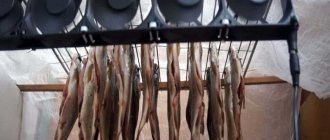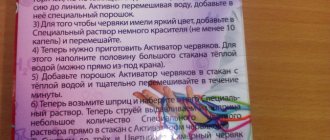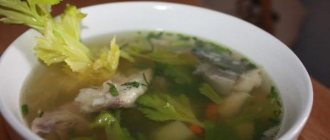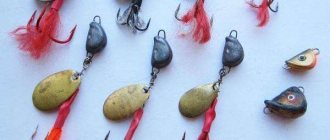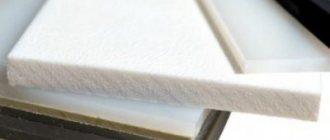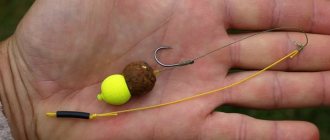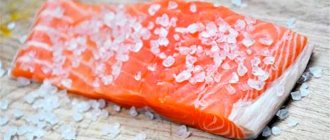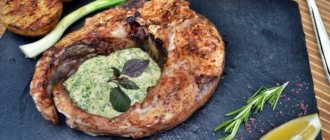Boilies are a relatively new, but quite common bait. Carp, crucian carp, bream, carp and other peaceful representatives of the ichthyofauna are happy to bite on the bait. A small bag or jar of boilies is quite expensive. To save on the purchase of nozzles, you can start producing boilies at home.
The manufacturing process is not complicated, but painstaking. It’s worth stocking up on patience and the necessary ingredients. The bait consists of components of plant origin and various additives that enhance the attractiveness of the bait.
Basic ingredients for preparing boilies for fishing
The basic composition of boilies includes flour, cereal, milk powder, and egg. Based on the basic components, you can prepare dough for bait. Then divide the base and add various flavors, dyes and other additives to it. Thus, from one batch you can prepare boilies with different flavors and colors.
Flour:
- soy;
- barley;
- fish;
- meat and bone;
- pea;
- corn;
- millet;
- buckwheat
Cereals:
- semolina;
- corn;
- rolled oats, corn flakes;
- millet.
You can supplement the basic composition with breadcrumbs, bread, cookies, gingerbread, bran, chocolate rolls and other ingredients.
Additional ingredients for catchable boilies
All bait recipes contain additional components in addition to the main composition. Secret additives help in preparing catchy boilies. Each ingredient can enhance certain qualities of the bait and make a bait that will meet all fishing conditions. To give the nozzle a porous structure, you can add crushed table or sea salt to the dough.
Dyes and thickeners
Starch, gelatin, agar or pectin are well suited as thickeners when making nozzles. You can also purchase special thickeners in stores.
You can add attractiveness to the balls using dyes. Both natural and artificial dyes are used. On sale you can find powders, gels or liquid paints. Color plays an important role, especially in winter and when the bite is weak.
Natural dyes:
- carrot;
- sea buckthorn;
- beet;
- blueberry;
- blueberry;
- spinach;
- currant.
Natural dyes should be used with caution. This is due to the fact that some odors may not attract, but rather repel fish. You can use juice or chopped pulp.
It is recommended not to use dyes unless absolutely necessary. For example, homemade pea boilies will have a natural yellow-orange color, and semolina balls will be pure white. These colors are quite catchy even without the addition of paints.
Dry spices and herbs for bait
The use of spices helps give the bait an attractive aroma. It is important to remember that sometimes a strong smell can scare away wary fish. All strong-smelling components should be used according to the season and take into account the types of fish being hunted.
Spices and seasonings:
- ground pepper;
- dried garlic;
- turmeric;
- vanillin;
- hemp seeds;
- sunflower seeds;
- ground dill seeds;
- cinnamon;
- anise seeds.
Spices and seasonings should be added a little at a time. Fishermen recommend preparing several compositions with different saturations. This will help avoid mistakes when making bait.
Liquid flavorings to enhance taste
Another type of additional components are liquid flavors. Both natural products with a pronounced aroma and purchased ones are used. The most commonly used natural ingredients are honey, garlic or dill extract, and fruit syrups. If fishmeal was used to make the base, no flavorings are added.
Artificial Flavors:
- caramel;
- peach;
- Tutti Frutti;
- vanilla;
- hemp;
- garlic;
- chocolate;
- anise;
- plum;
- honey.
Flavorings can be added at the initial stage of preparation or during the cooking process. Some anglers prefer to dip their finished boilies before casting.
Digestive stimulants
To make fishing more productive, food enzymes should be added to the bait. Such amplifiers have a positive effect on the bite of large fish. Catfish, bream and carp respond with pleasure to all kinds of additives. You can add special purchased components to the mixture or select stimulants yourself.
Food enzymes and flavor enhancers:
- Festal;
- betaine;
- Mezim;
- bloodworm;
- gammarus, daphnia;
- flaxseed cake;
- Essentiale forte N.
Experienced fishermen advise not to be afraid and to introduce the most unexpected ingredients into the compositions of baits and lures. Perhaps this way it will be possible to make the most catchy boilies. But you need to be careful not to add a new component to the total mass. It is better to make several trial versions in small quantities. In this case, unsuitable baits can simply be thrown away or used as bait boilies.
Dips
Dips are special substances that are used to treat boilies to increase their attractiveness. The dips have a pleasant smell and taste, they cover the bait well and stay on the hook for a very long time.
The use of dips is important during periods of poor bite, when carp react poorly to conventional bait. Dips are also used if carp are fed with the same boilies used for fishing.
In this case, dips allow you to distinguish baits mounted on hair from all others. And this has a positive effect on the frequency of bites.
Equipment for preparing boilies
Making your own bait is not difficult. To make boilies with your own hands for carp, carp, catfish and other fish, you need to prepare simple equipment.
To make boilies you need:
- A saucepan for cooking ingredients.
- Kitchen scales with an error of 1 to 5 g.
- Bowls, cups from 1 to 3 liters for mixing ingredients. Any container made of plastic, ceramic or metal will do.
- Measuring cup.
- Mixer, whisk or regular fork.
- Sieve and colander.
- Rolling board.
- Knife, teaspoon and table spoon.
- Baking tray or tray for drying. Towel or thick cloth.
- Special gun for making boilies. Some anglers use a construction syringe.
It is advisable to record the stages of preparation in a notebook, so that later you can take into account all the mistakes and shortcomings. And also easily repeat the process. When making a large volume of bait, it is best to purchase a special syringe gun. Thanks to special equipment, the balls will have the correct size and ideal shape.
Why do carp bite well on boilies?
Boilies were invented in the 80s of the 20th century by European fishermen who purposefully hunted carp and grass carp. When you need to catch a trophy, the biggest problem is cutting off the bites of small fish, which every now and then try to eat the bait.
Carp fishermen made large hard balls with a diameter of more than 2 cm from semolina, corn flour and raw eggs, and tried to equip them with hair, in the hope that only large carp would start biting. And it worked! As a result, boilies for carp quickly gained popularity among carp anglers, and today they have become the most popular baits.
Technology for preparing bait at home
The process of preparing bait is quite simple. It is important to do everything step by step and not confuse the proportions of the components.
Cooking technology:
- Liquid and dry ingredients are mixed in separate containers. The result is two compositions for making dough.
- Then the liquid component is slowly poured into the container with the dry mixture. The components are thoroughly mixed. You should get an elastic dough without lumps. The mass should not stick to your hands. If the dough is too sticky you need to add some dry ingredients.
- The dough should rest for at least 1–2 hours.
- To prevent the dough from drying out, transfer it to a bag or cover it with film.
- After the dough has settled, it is divided into small pieces. Roll out the lumps into sausages 1 cm thick.
- The resulting sausage is divided into equal cubes and rolled into balls.
- Next, heat treatment is carried out.
There are two options for final processing of the nozzle. In dry heat treatment, the balls are placed in a microwave oven. With this method, the balls are porous and loose. In water, such a bait quickly loses its shape and disintegrates. The advantages are the buoyancy of the bait.
The second option is to cook boilies in a saucepan. First, the balls are boiled and then dried on a baking sheet for 24 hours. When drying, make sure that the bait does not touch each other. This method produces sinking baits that slowly disintegrate in the water.
These methods use different boilie ingredients. The bait should be stored in the refrigerator, in a container with a tight lid. If long-term storage is required, the bait is frozen.
Recipes for making boilies of various types at home
You can find many boilie recipes online. It is important to choose exactly the option that suits the fishing conditions on a particular body of water. You should also remember the taste preferences of different types of fish and the seasonality of fishing.
Semolina boilies
Most fish love groundbaits and baits with semolina. Therefore, recipes using it can be considered one of the best in terms of catchability.
Semolina boilies No. 1:
- 400 gr. semolina;
- 200 gr. powdered milk;
- 200 gr. corn and soy flour;
- 50 gr. powdered sugar.
Cook semolina porridge over low heat until cooked. After the porridge has cooled, dry ingredients are added to it. If desired, flavorings, flavor enhancers and coloring agents are added to the mixture.
A simple recipe for semolina boilies No. 2:
- 400 gr. semolina for 400 ml of water.
- After boiling, dyes and aromatic additives are added to the water with porridge.
- Cook until done.
- After the porridge has cooled, begin forming balls.
- Boilies are strung on a thread or thin wire and dried.
Recipes with semolina are perfect for making boilies for carp fishing. Using the thread that was used for drying, you can attach the nozzle to the hair equipment.
How to cook corn boilies
Boilies based on corn flour performed well in the summer. At this time, fish prefer vegetable baits with a sweet taste and aroma.
Simple cornmeal recipe No. 1:
- Mix 500 gr. corn and wheat flour, feed for birds, milk powder.
- Then mix 5-6 chicken eggs, 3-5 tbsp. spoons of sunflower oil, coloring and flavoring.
- Combine the mixtures and mix thoroughly.
- Make balls from the dough and cook for 2-3 minutes.
- After drying, the bait is ready for use.
Corn recipe #2:
- Pour water into a saucepan and bring to a boil.
- Add 400 gr. corn and 200 gr. soy flour. Mix thoroughly.
- Then add 150 grams. casein and 150 gr. decoys. Casein can be replaced with egg yolk (3–4 pcs.).
- Add 50 g to the mixture. hemp and sunflower seeds.
- The last step is adding flavors and dyes.
Making boilies at home is a very exciting process. With a creative approach, anglers create new and unique recipes from common base compounds.
DIY pea boilies
Boiled peas for fishing are usually used for preparing complementary foods and as an independent bait. Fish such as carp, bream, crucian carp and carp react to pea baits.
To make pea boilies with your own hands you will need very little time and the simplest ingredients.
Recipe for pea boilies:
- 200 gr. polished peas.
- 1 tbsp. spoon of glycerin.
- 60 gr. semolina.
- 2 tablespoons of honey.
- 2 eggs.
- 2 tbsp. spoons of sunflower or corn oil.
The peas are boiled until they become porridge, then the remaining ingredients are added. Then the balls are prepared and boiled in boiling water for several minutes. You can use a multicooker for cooking. The balls are dried and frozen.
Boilies from makuha
Carp respond well to cake bait. The bait turns out to be nutritious and aromatic. These qualities of the bait help to attract fish from a long distance.
Recipe for boilies from makukha:
- 350 gr. makuhi mixed with 250 gr. fish meal, 150 gr. crushed sunflower seeds, 100 gr. wheat and corn flour, 30 gr. powdered sugar.
- Mix 12 eggs, 40 g in a separate container. fish oil, 20 ml flavoring, 15 g. salt.
- Then mix both compositions until smooth.
- The boilie dough is allowed to sit for several hours in a cool place.
- Next, roll the dough into balls and cook in a slow cooker for 3-4 minutes.
- Dried boilies are frozen.
Boilies need to be dried for at least 4–5 days.
Floating and sinking boilies
The technology for preparing floating and sinking boilies differs only in the last stage of preparation. To get a sinking bait, the finished balls are boiled in water and dried. It can be dried outdoors or in the oven.
To obtain floating attachments, the finished product is not boiled, but heated in a microwave oven. Such boilies float well, but quickly disintegrate.
Dusting boilies
Dusting baits differ from regular ones in that they are not boiled or baked in an oven. The prepared balls are simply dried in air without heat treatment.
Dust boilie recipe:
- Dry ingredients are mixed in a separate container. To do this, take corn flour, buckwheat and semolina in equal proportions.
- Ground hemp and sunflower seeds are added to the flour and cereal mixture.
- Add molasses or fruit syrup to the dry composition and mix until smooth. You should get a non-sticky dough.
- The dough should rest in the refrigerator for about 10–12 hours.
- Then the dough is formed into balls of the desired size.
- The nozzle is dried for 8–10 hours.
Dust nozzles can be used at any time of the year. Unlike boiled baits, dried ones crumble faster. Therefore, it is important to ensure that the bait does not fall apart and recast more frequently.
How to make mini boilies
Fans of crucian carp fishing are sure that the main compositions work a little worse if bread and semolina are not included in them.
Recipe for mini boilies with bread:
- Processed cheese is added to the finely chopped pulp of black bread. The mixture is thoroughly mixed until smooth.
- Flavor enhancers and flavorings are added to the resulting mixture.
- The dough is rolled into balls with a diameter of 1 cm.
- Pour unrefined oil into a heated frying pan and fry the balls for 2-3 minutes.
- After frying, the balls are laid out on a towel or napkin until completely dry.
The result is a fairly hard bait, which is convenient to attach to a hair rig. If you need to get softer baits, then the balls are not fried, but simply filled with sunflower oil.
Carp fishing at different times of the year
Modern boilies are made using special technologies and a large number of ingredients. The baits contain such attractive components as protein, protein, flavors, activators, etc.
Among the most favorite boilies among carp and carp are baits from well-known companies.
The best boilies are produced by:
- Richworth;
- Tandem Baits;
- Mainline;
- Nutrabaits;
- Prologic.
These brand names are the key to successful fishing. The only drawback of all these baits is the high cost. That's why fishermen have to use their culinary skills to invent the best bait for catching carp and carp.
The performance of boilies also depends on the water temperature, time of year, and weather conditions. In cold water, carp and carp show greater interest in boilies with a high protein concentration. In the warm summer, carp and carp prefer the taste of cereals.
What are boilies, their types and methods of fishing. What the equipment for catching carp with boilies looks like - see the video for more details.
The process of catching carp with boilies
Modern boilie baits can contain many components that attract carp. Quite common are protein, activators, protein.
The best manufacturers of boilies are:
- Prologic;
- Tandem Baits;
- Richworth;
- Nutrabaits;
- Mainline.
Below is a small diagram of how to tie boilies to a hook.
Three main types of boilie equipment:
- sliding;
- deaf;
- helicopter.
The sliding boilie rig allows the sinker to move smoothly along the line. In this case, the fish does not feel resistance and takes the bait more confidently than with a blind rig.
But there are also some disadvantages. There is no self-closing. But this problem can be easily solved. At a distance of 60 cm from the sinker, attach the bead tightly. It will serve as a stopper.
To install the sliding boilie equipment you will need:
- sinker;
- latch;
- buffer coupling;
- leadcore;
- silicone tube;
- swivel
The correct order for assembling the gear:
- We take the fishing line and put on the leadcore.
- The swivel and buffer coupling must be inserted through the ring.
- We tie the swivel with a Palamar fisherman's knot.
- We mount a piece of silicone tube onto the latch. Then we attach it to the swivel.
- A sinker must be attached to the latch. This connection is closed using a silicone tube. With this installation, the sinker is very easy to change.
- Attach the leash and hook.
Mainly used for long casts. The sinker is attached to the end of the main line.
To assemble the equipment you need to have the following components:
- heat shrink tube 5 cm shock leader;
- two rubber beads;
- leadcore needle;
- swivel;
- sinker;
- PVA bag;
- shock leader;
- lure;
- coupling for leadcore.
The assembly proceeds as follows:
- It is necessary to mount a sinker on the shock leader.
- You need to put a coupling on the swivel and leadcore using a needle.
- The heat shrink tube should be placed on the fishing line. The tube must first be held above the steam.
- Using a needle, you need to put one bead, a swivel and a second bead on the tube.
- a leash must be tied to the swivel, and the leadcore must be connected to the fishing line. The beads should pass through the knot easily.
- The bait along with the sinker should be poured into a PVA bag. Next, we wrap the sleeve around the top of the bag and tie it with a piece of braid.
- Now all that remains is to attach the bait and cast.
The simplest of boilie rigs. It is very similar to the inline rig, but it does not provide for the main line to slide through the weight feeder.
It has a fairly simple installation method. Swivels and sinkers are used for assembly. Leashes of such equipment are divided into two types:
- lower location;
- top location.
The disadvantage of such a boilie rig is that when hooked, the fish feels the resistance of the sinker while pulling on the leader, which cannot be said about the inline rig.
After the carp tackle is completely ready, we proceed to attaching the boilie. To do this you will need an attachment needle with a clasp. We do the following:
- We take a needle and pierce the boilie in the center with it so that the fastener has free movement.
- Open the clasp and insert a loop of leash hair there.
- Close the clasp and pull the boilie from the needle onto the leash so that there is about two mm of free space for the loop at the end of the boilie.
- Release the needle from the loop.
- We insert the boilie fastening stopper into the free space of the loop.
- We press the stopper into the body of the boilie.
- Place the boilie in a dip of the appropriate scent for 15-20 minutes.
- After deepening, the equipment is completely ready for use.
- We cast the tackle to the selected fishing point.
The principle of catching carp with boilies is that the fish, when approaching the bait, swallows it along with the hook. After which it begins to move, which are determined by the fisherman using bite alarms, and the hook is carried out.
To successfully catch carp, you need to choose the right equipment and baits, based on the characteristics of the fishing location and the condition of the reservoir, as well as the food supply of the carp. Therefore, you need to decide on the size of the boilies and flavors, and the appropriate equipment. Good luck in your carp fishing.
To start catching carp with boilies, you need to determine a suitable point on the pond. This is done using a marker rod. The marker is thrown to the maximum distance. Using a special weight, the bottom topography is studied and the optimal location is determined. The sinker dragging along the bottom determines all the irregularities, character and structure of the bottom.
A marker float will help determine the depth. For more accurate measurements, several casts are made. It is known from practice that it is better to fish at an elevation of the bottom, the so-called edge. For more effective fishing, it is better to find several areas at different distances from the shore.
After identifying a promising location, you should pay attention to carp bait.
- Fine;
- Large faction;
- Animal components;
- Flavors;
- Sweeteners (molasses, molasses);
- Soil (for weighting, diluting nutritional value);
- The bait that is supposed to be used for fishing;
- Water from a reservoir.
By sifting the fine fraction and mixing with the coarse fraction, the mixture is moistened. The bait is allowed to brew. The remaining components are added. The mixture is brought to the desired consistency (diluted with water). Balls are formed. They should not break on the water when casting, but easily disintegrate on the bottom. The main thing is to let the boilies dry. After 10-12 hours at room temperature, the boilies are ready.
“Rockets” for bait
Feeding the point is done using special feeders (rockets); in the current, weighted “rockets” are used. To feed the carp at one point, after the first cast the line is clipped onto the spool. This will allow you to constantly maintain the same distance. A landmark chosen on the opposite bank will show the desired direction. You can also feed carp using a fishing slingshot.
It is not necessary to look for such bait equipment to bait carp. You can make such a device yourself. This is quite simple - any semi-closed container made of plastic or other durable material that does not deform in water will do. You just need to tie a fishing line, braid or just strings to such a feeder and make through holes 0.5 - 0.7 cm in size in it. It is important to remember that you should not use linen ropes, which can simply break at one moment.
The first feeding of the carp is quite plentiful - up to 2 liters of bait mixture. During the fishing process, there is a constant feeding of the place. This is done to keep the fish on the point. When feeding carp, you can use bait boilies. It is convenient to deliver them to the fishing site using a throwing tube (cobra).
Fishing process
After the place has been baited, they begin the fishing process itself. It can be divided into five stages:
- Equip the rod with a leash and a feeder. Check the secure fastening. Bait the bait, hammer the feeder. Throw the tackle in the right place.
- Place the forms on the prepared stands. Adjust line tension. Install alarms.
- Set the clutch correctly. He should allow the line to come off the spool freely when the fish makes a strong first jerk. If the reel is with a baitrunner, put it in the working position.
- Refill the feeder periodically.
- Hooking, fishing for carp.
Read more: Rating of the TOP 10 best mass gainers: which one to choose, pros and cons, price
It is worth using boilies taking into account the season, place of fishing, and the fish’s preference for certain smells. Therefore, in your arsenal it is necessary to have baits of various types, sizes, colors and aromas.
The taste of carp changes depending on the water temperature. Therefore, it is worth making adjustments to the baits used for different times of the year.
- Spring. Bait (10 mm), with the smell of spices or fish options. Bright colors are used.
- Summer. Boilies of both large and small sizes. Various color combinations. They are selected depending on the specific fishing conditions. There are no special restrictions here.
- Autumn. Preferably nozzles with non-sweet aromas.
- Winter. Small, bright boilies, with a pronounced crustacean taste.
It is optimal to use forms 3 meters long with dough up to 100 g. They easily allow you to catch fish weighing up to 10 kg. For larger carp, feeders with a dough of one hundred or more grams are used.
Equipment:
- Monofilament (0.2 mm) or braided fishing line (0.12–0.13 mm);
- Leashes (0.12-0.18 mm.);
- Carp hooks;
- Feeders.
Any of the known carp mounts can be used for feeders. The most catchy ones include “paternoster” and “method”.
Coils are selected in sizes 3000, 4000 with a moderate power gear ratio (1:4.6 – 1:5.2).
The groundbait is prepared from different fractions, with the addition of live components and flavorings. You definitely need to add what you will be fishing for. They begin fishing directly after identifying the point and feeding it.
Feeders
Although feeders also relate to feeder carp fishing, we will still look at some of the main points. The main requirement for carp feeders is their ability to deliver as much food as possible to the fishing point. To catch carp, feeder feeders of open or closed type are used. Closed ones are good for use on bodies of water with currents and rivers. The bait is washed out of them much more slowly.
Round feeder is one of the most popular variations of feeders
What is the shelf life of the bait?
Beginners who are just starting to master making boilies at home often wonder. How long can the finished nozzle be stored? When properly made, dry boilies can be stored for a year. In the freezer the period increases. But you should remember. What if the bag is not sealed tightly, the nozzle may absorb odors or get twisted.
Experienced fishermen advise preparing bait in winter before the start of the season or right before fishing. This will give you more confidence that the attachment will retain its quality.
